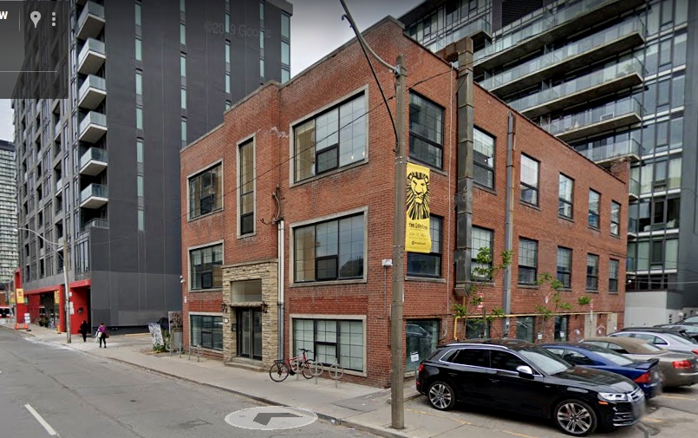
The last posts for 2019 looked at two recent cases of the Local Planning Appeal Tribunal (LPAT) involving the potential demolition of a built heritage resource.1 In both cases the Tribunal determined that demolition was not inconsistent with the “shall be conserved” policy of the Provincial Policy Statement.
In one case, in Stratford, the Tribunal was okay with the use of the words “demolition, in whole or in part” in an Official Plan policy outlining the range of actions to which a significant industrial structure might be subject. In the second, in Rosedale, Toronto, the Tribunal approved a development that would obliterate an important mid-century house in a heritage conservation district.
These cases raise serious questions. Is demolition of a building really compatible with its conservation?2
More to the point: Does the LPAT really understand cultural heritage and what it means to conserve it?
The latter question looms especially large. The Conservation Review Board will soon fade to black as the Local Planning Appeal Tribunal takes over its role.

Under the changes to the Ontario Heritage Act made by Bill 108, passed last year but not yet in force, the LPAT assumes all designation-related responsibilities. In addition to hearing demolition appeals as at present, the Tribunal will hear alteration appeals. Most significantly, it will also hear appeals from municipal decisions to designate individual properties under Part IV of the OHA — and render a final, non-appealable decision on whether a property is to be designated or not.3
In other words, members of LPAT will be weighing arguments for and against designation and judging whether the subject property makes the grade. This function, since 1975 the prerogative of the Conservation Review Board, requires a good — no, a highly developed — understanding of cultural heritage generally and the criteria for designation set out in O.Reg. 9/06 specifically. In the past members of the CRB for the most part have had a professional background and/or considerable experience in heritage conservation in the province. Reviewing designations was their bread-and-butter (they had no other significant duties) and they were very good at it.
What about the heritage training and experience of members of LPAT?
It is not a good sign when only one of the 33 current LPAT members appears to have any background in heritage.4
And it is also not a good sign when LPAT decisions in recent heritage-related cases reveal a questionable understanding of what heritage is and what constitutes heritage conservation.
Of course this is not to say that LPAT members cannot be trained (or better trained) on how to handle heritage cases. To be ready for the presumed July 1, 2020 proclamation of the OHA changes, the Tribunal urgently requires serious training in heritage conservation principles and practice and — with respect to their new area of responsibility — cultural heritage evaluation in particular.
Remember that the main diet for LPAT members is land use planning appeals which often involve a diverse range of public policy interests as reflected in the PPS. As they take on their designation appeal function under the OHA, the danger is that LPAT panels will not be able to focus on the merits of the case — questions of heritage significance — to the exclusion of other interests and factors that do not bear on eligibility for designation. How many times has the CRB had to caution the parties before it that it cannot consider “planning matters” or other evidence extraneous to its mandate under the OHA!
The danger will be even greater in situations where the Tribunal is also dealing with a demolition issue in the context of a redevelopment proposal for the property in question.
Even before the big switch-over, signs of confusion about role and jurisdiction are already evident. In 457 Richmond Street West Limited v. Toronto (City) the LPAT approved the proposed redevelopment of property in downtown Toronto that would necessitate the demolition of a listed property in a designated heritage conservation district.5 The property had been listed as part of a “batch” listing of properties that the city determined contributed to the character of the King-Spadina Heritage Conservation District. (The district has been appealed so is not yet in force.)

457 Richmond Street West, Toronto
While this was a rezoning appeal under the Planning Act, the LPAT panel at times seemed to think it was also deciding whether the property should be listed or designated under the Ontario Heritage Act. In an extraordinary statement it actually second-guesses the city’s listing of the property:
The Tribunal is not persuaded that there existed sufficient evidence for the City to rate the subject building as a significant or contributing building as it does not appear from the evidence to make an important contribution to our understanding of the history of a place, an event, or a people. The Tribunal finds … that the subject building should not have been Listed on the City’s Heritage Register as part of the City’s batch Listing exercise ….6
Recall, please, that the OHA gives municipalities the unfettered power to list properties “that the council of the municipality believes to be of cultural heritage value or interest.”
With respect to designation, the same developer had separately appealed the district designation and the property's identification as one “contributing” to the district under the Ontario Heritage Act. (The matter is scheduled to be heard at a later time.)
And yet a good part of the decision (and apparently the hearing) was devoted to the question of whether this was a contributing building, with the Tribunal finding in no uncertain terms that it was not, and concluding that it was not “significant” under the PPS. The structure was “entirely unremarkable”, “a dated anomaly” and “devoid of any character and provides no sense of place.” (Tell us what you really think.)
The approval here of the demolition of the existing structure and redevelopment of the property is not unreasonable in my view, but the way the decision was reached, the sometimes cloudy reasoning and overreach, along with the unclear relationship to other proceedings, give one pause.7
Ominous signs for the road ahead?
Hey, ministries of the Attorney General and Heritage, Tourism, Sport and Culture Industries… as July 1 approaches you must be working on this. Get the Local Planning Appeal Tribunal the members, training and support it needs for its new role in heritage — and the ones it already has.
Notes
Note 1: See “Demolition, “Conserved” and the LPAT, part one” and “Demolition, “Conserved” and the LPAT, part two.”
Note 2: For another, critical view of the Stratford case, see “Black is White” by Paul R. KIng in the fall 2019 issue of CHOnews.
Note 3: I have been critical of this fundamental change to Ontario’s designation regime. See “What to make of Bill 108” from May 25, 2019.
Note 4: One LPAT member’s bio mentions his involvement as a volunteer community heritage committee member in a local neighbourhood association.
Note 5: LPAT case number PL170832. The decision was issued July 15, 2019. See https://www.omb.gov.on.ca/e%2Ddecisions/pl170832%2Djul%2D15%2D2019.doc.
Note 6: Paragraph 30 of the decision.
Note 7: As of the time of writing the City of Toronto is seeking leave to appeal the decision on the grounds of errors of law.